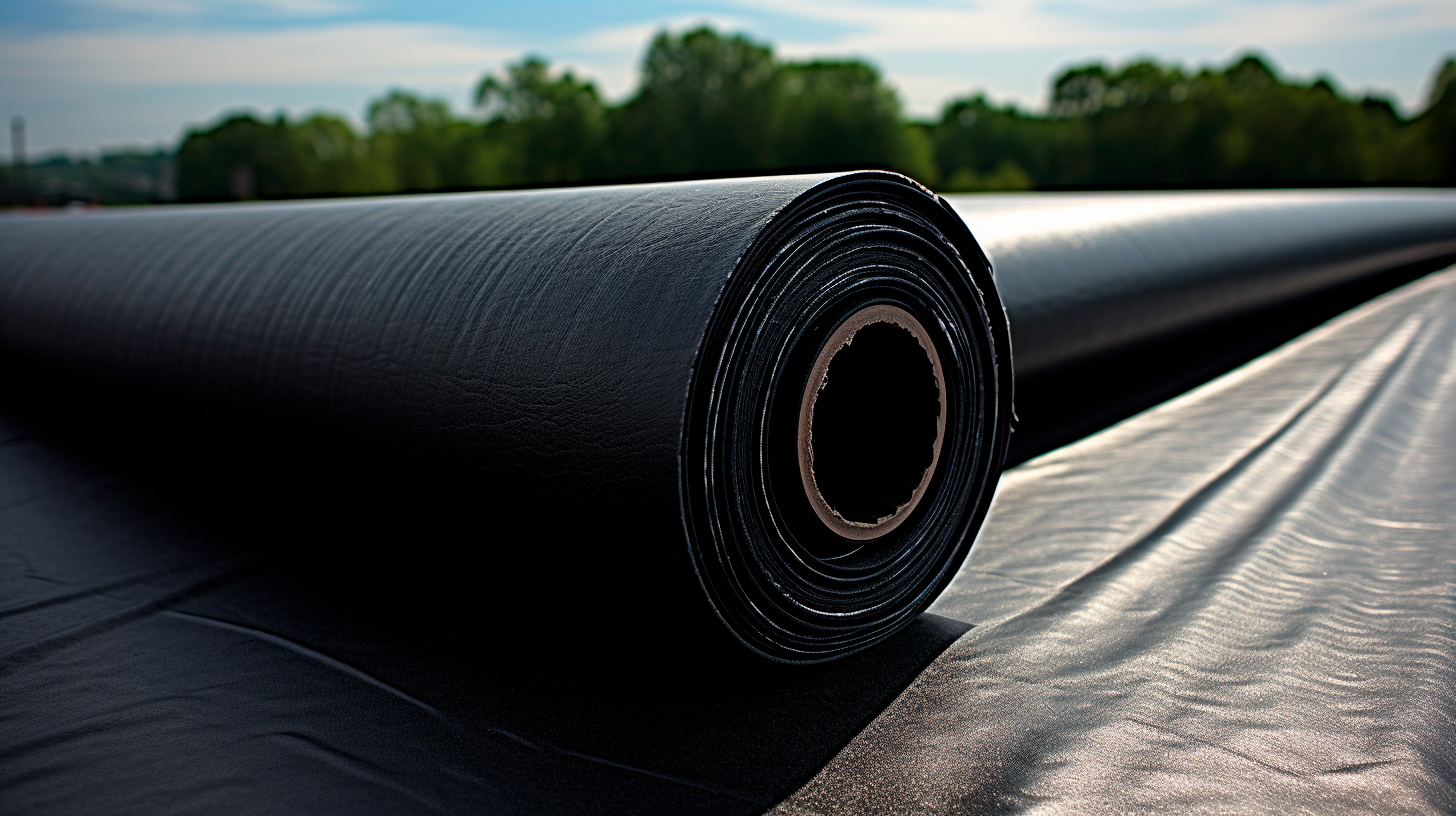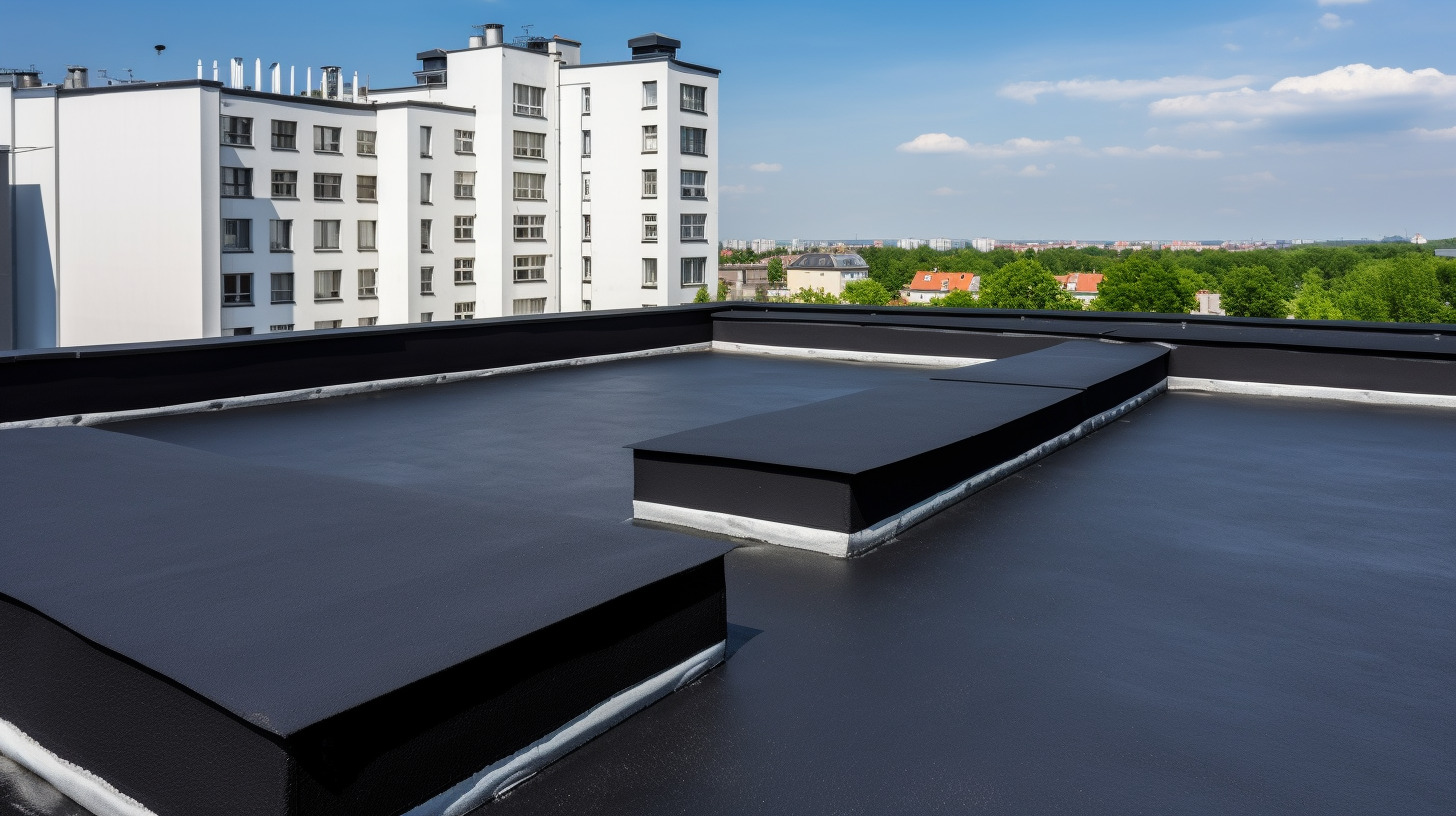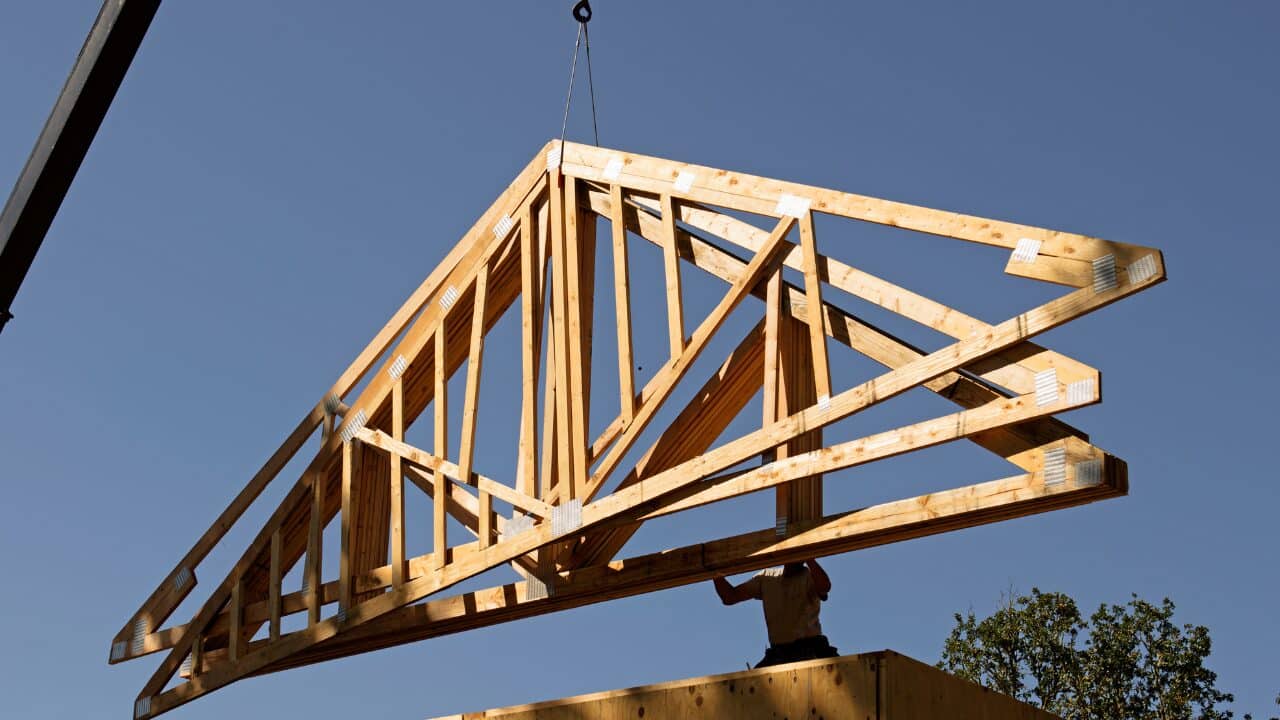Flat roofing systems have gained popularity recently due to their modern aesthetics and space-saving designs. However, they come with challenges, one of the most prominent being the risk of leaks and water damage.
In this comprehensive guide, we will explore the world of flat roofing, covering everything from the different types of flat roofing materials to preventing leaks and performing flat roof repairs when necessary. Whether you are a homeowner looking to maintain your roof or a DIY enthusiast eager to take on a roofing project, this article covers you.
Table of Contents
Understanding Flat Roofing Systems
As the name suggests, flat roofing systems are characterized by nearly level or shallow slope roofs. They are commonly found in commercial buildings, modern homes, and historical structures.
The appeal of flat roofs lies in their clean lines and versatility, allowing for rooftop gardens, solar panel installations, and more. However, due to their design, these roofs are more susceptible to leaks than steep-slope roofs. To better understand how to prevent and repair leaks, let’s first delve into the types of flat roofing materials.
Types of Roofing Materials for Flat Roofs
- Modified Bitumen: Modified bitumen roofing is a popular choice for flat roofs. It consists of asphalt reinforced with polyester or fiberglass. It is known for its durability and ability to withstand extreme weather conditions.
- PVC Roofing: PVC (Polyvinyl Chloride) roofing membranes offer excellent waterproofing properties. They are highly resistant to chemicals, making them suitable for industrial applications. PVC roofs are single-ply membranes, meaning they consist of a single material layer.
- Single Ply: Single-ply roofing materials include PVC, TPO (Thermoplastic Olefin), and EPDM (Ethylene Propylene Diene Monomer). These materials are lightweight and flexible, making them easy to install.
Now that we’ve covered the basics of flat roofing materials let’s move on to the crucial topic of preventing leaks and water damage.
Preventing Leaks and Water Damage
Preventing leaks in flat roofs is essential to avoid costly water damage repairs and maintain the structural integrity of your building. Here are some proactive steps you can take:
Regular Inspections
- Conduct regular roof inspections, especially after severe weather events. Look for signs of damage or wear and tear.
- Check for ponding water, which occurs when water pools on your roof. Ponding water can lead to leaks if not addressed promptly.
Maintain Proper Drainage
- Ensure your flat roof has a well-designed drainage system to prevent water from accumulating.
- Clear debris from drains and gutters regularly to maintain proper water flow.
Seal All Penetrations
- Flat roofs often have penetrations like vents, HVAC units, and skylights. Make sure all these areas are properly sealed to prevent water infiltration.
- Inspect flashing around these penetrations for signs of damage or deterioration.
Roof Coatings
Consider applying roof coatings as an extra layer of protection. Roof coatings can extend the lifespan of your flat roof and enhance its resistance to leaks.
Professional Roof Contractor
Hire a reputable roofing company or roof contractor for regular maintenance and inspections. Professionals can identify issues early and provide expert solutions.
Flat Roof Repair: Dealing with Roof Leaks
Despite your best efforts, leaks can still occur on flat roofs. When faced with a leak, it’s essential to address it promptly to prevent further water damage. If you’re in the Boston area, our 234 West Newton St #2, Boston, MA 02116 team is always ready to assist you. Here’s how you can approach flat roof repair:
Identify the Damaged Area
- Interior Inspection: Start by checking the interior of your building for water stains or damp spots on the ceiling. These are telltale signs of a roof leak.
- Exterior Inspection: Once you’ve identified the general area of the leak, head to the roof to pinpoint the exact location. Look for cracks, holes, or damaged roofing material.
DIY Flat Roofing Repair
- Cleaning: Begin by cleaning the damaged area. Remove dirt, debris, and loose gravel.
- Patch and Seal: If the damage is minor, patch it with roofing cement or a suitable sealant. Ensure that the area is dry before applying any adhesive.
- Replacing Shingles or Membrane: If the damage extends beyond a small area, you may need to replace the damaged section of the roofing material. Ensure the replacement material matches your existing roof.
- Flashing Repair: Check and repair any damaged flashing around penetrations and edges.

When to Call a Roofing Professional
While DIY flat roofing repair can address minor issues, it’s crucial to know when to call in a roofing professional:
- If the damage is extensive and beyond your DIY skills.
- If you are still determining the cause of the leak.
- If the leak persists after attempted repairs.
- If your flat roof has reached the end of its lifespan, it may be more cost-effective to consider flat roof replacement.
Flat Roof Replacement
In some cases, more than flat roof repair may be required, especially if your roof has suffered extensive damage or has reached the end of its expected lifespan. Flat roof replacement becomes the most viable option. Here’s what you need to know:
Signs It’s Time for a Flat Roof Replacement
- Multiple and recurring leaks that are difficult to repair.
- Significant sagging or visible structural damage.
- Extensive wear and tear on the roofing material.
- Frequent repairs become a financial burden.
Choosing the Right Roofing Material
When replacing your flat roof, consider the type of roofing material that best suits your needs. Consult a roofing professional to decide on the most appropriate material for your situation.
Hiring a Roofing Contractor
Selecting the right roofing contractor is crucial for a successful flat roof replacement. Here are some tips for making the right choice:
- Research and gather multiple quotes from reputable roofing companies.
- Check for licenses and insurance to ensure you work with a legitimate contractor.
- Ask for references and review their past work.
- Discuss the timeline, warranties, and potential issues before signing a contract.
Conclusion
Flat roofs offer a sleek and modern design solution, but they require proper maintenance and attention to prevent leaks and water damage. Regular inspections, proactive measures, and timely repairs are essential in prolonging the life of your flat roof. While DIY flat roofing repair can address minor issues, it’s crucial to recognize when professional help is needed.
When a flat roof reaches the end of its lifespan or experiences significant damage, flat roof replacement becomes the best course of action. By taking these steps and working with reputable roofing professionals, you can ensure that your flat roof remains watertight and continues to protect your home or business for years to come.





